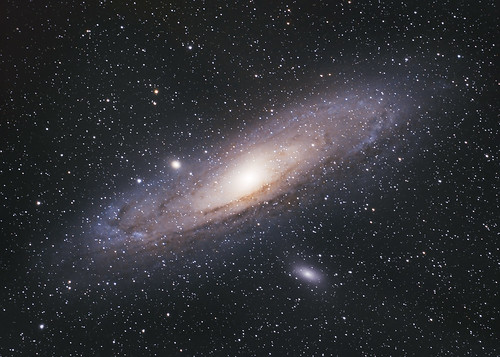
The Sculptor Galaxy, NGC253
NGC 253, also named Sculptor Galaxy is one of the brightest spiral galaxies visible. This dusty galaxy lies 11 million light-years away.
About 70 thousand light-years across, NGC 253 is the largest member of the Sculptor Group of Galaxies.
The high dust content accompanies frantic star formation, earning NGC 253 the designation of a starburst galaxy.
This data was acquired by me in my hometown and processed by a friend and experienced Astrophotographer Maicon Germiniani who did a wonderfull job.
It was also the first produtcion with my new telescope: a FotonAstro 200mm F4 newtonian astrograph
🗓 October, 22nd to 25th. 2022
🕶 Askar L,R,G,B filters
- 46 x 180s Luminance frames
- 31 x 180s Red frames
- 21 x 180s Green frames
- 36 x 180s Blue frames
- total integration time: ~6,7h





